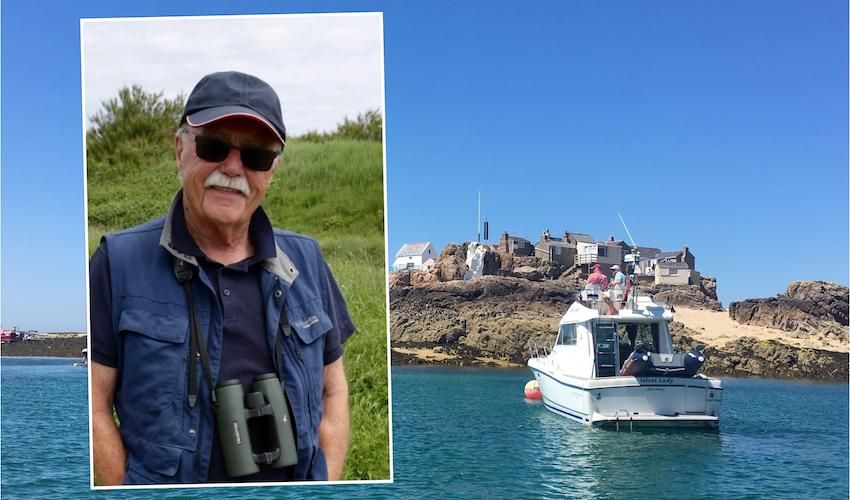

Could humans' increasing fascination with the environment actually be doing more harm than good?
Some may recycle, others stick to reusable materials or ditch the car on their morning commute - as awareness about man's impact on the natural world increases, people are becoming more and more careful about how their lifestyles can damage the environment.
But Express columnist and local environmentalist Mike Stentiford MBE argues that the recent surge in people's desire to get "up close and personal" with nature may inadvertently be more destructive than helpful...
"There must have been countless recent surveys and questionnaires seeking public opinion as to what exactly it is that makes the island just that little bit extra special. Time and time again, the coastline, its beaches and the ambience of the countryside have taken top honours in just about every public opinion poll that’s been conducted.
Theoretically, it is precisely because of such justified acknowledgement that the States of Jersey continues to deliver protective measures to areas categorised as 'sites of special interest' (SSI).

Pictured: Les Mielles is one of Jersey's protected areas as a 'site of special interest'.
In addition to the obvious man-made pressures on such landscapes, a recent decline in certain species of biodiversity likewise forms a significantly essential part of any SSI designation.
What appears to be causing this surreptitious down turn in certain wildlife species is easy to determine when taking into account a comparatively modest land-mass accommodating what, to some, might be regarded as a disproportionate population.
As a consequence, wildlife either adapts or finds itself relocated to any remaining safe and relevant piece of newly found habitat. For many species, neither option is likely to be easy.
Oddly enough, the latest conundrum facing wildlife, whether local or global, is the undeniable human desire to experience ‘nature’ up close and personal. It’s a thought-provoking paradox whereby this collective fascination for the natural world sometimes culminates in serious animal welfare issues.

Pictured: "This collective fascination for the natural world sometimes culminates in serious animal welfare issues." (Mike Stentiford)
A recent observation in the national media offers a perfect example of how habitats and wildlife - in this particular instance in the high Arctic - are being threatened by an upwardly mobile trend in environmental tourism and the consequences brought about by more and larger cruise ships.
Recent figures indicate around 80,000 visitors taking advantage each year in what is unkindly promoted by the organisers as ‘last chance tourism’. As a result, cruise companies are forecasting a 40% growth by 2020.
With such an increase in cruise liners and adventurous passengers, the disturbance to the Arctic wilderness and its wildlife can be regarded as excessive.
Pictured: The local environmentalist said that there is a tricky "paradox" to navigate during an era of increasing interest in the natural world.
It would be foolhardy to grasp at any comparisons on a local level although an increasing desire for tourist related ‘wildlife watching’ in local waters clearly emphasises how easy it is for such controversial issues to arise.
Because of a welcome general interest in wildlife, local tourism would be missing an environmental trick or ten were it not to promote maritime opportunities to share intimate moments in close proximity of grey seals, bottle-nosed dolphins and a cross section of seabirds.
Hence the obvious summer-time promotion of the hugely popular RIB trips to our offshore reefs - and in particular to Les Écréhous.
While such endeavours can be applauded for providing environmental awareness, there’s no denying that constant landings and departures bring untold consequences to the wildlife that rightly rely on the reef and surrounding waters as their prime home base and safety zone.

Pictured: The Express columnist says that the popularity of trips to Les Écréhous could have harmful consequences for its native wildlife.
On a perfect sunny summer day, Les Écréhous has been known to receive a footfall of up to 200 visitors; from Jersey and from France.
Accommodating such high human numbers on a tiny offshore reef can be considered as excessive, but so too is the obvious disturbance to the seabirds that faithfully return to the reef each summer to nest.
While accepting that policing the reef would be financially problematic, the situation appears rather farcical in the knowledge that Les Écrehous is already established as an Internationally designated Ramsar site and, more recently, has been endorsed in the Island Plan as part of the Jersey National Park.
If the States of Jersey wish to show meaningful environmental responsibility towards Les Écréhous, then honouring their Ramsar and National Park obligations towards the reef would clearly demonstrate a true sense of political purpose."
The views expressed in this piece are those of the author and not of Bailiwick Express.
Comments
Comments on this story express the views of the commentator only, not Bailiwick Publishing. We are unable to guarantee the accuracy of any of those comments.